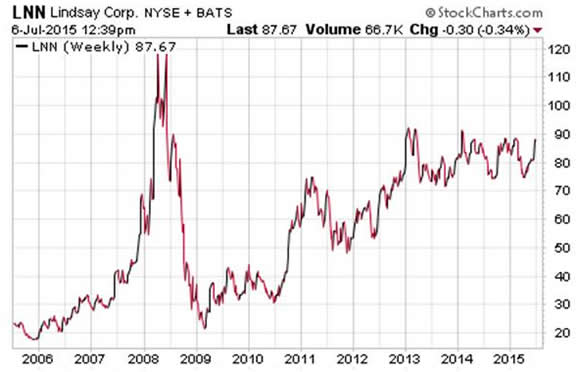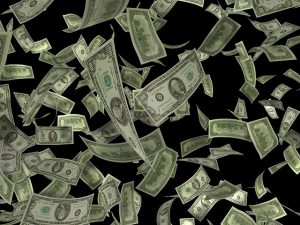How Dividend Reinvestment Plans Really Work
I’m not exactly jealous, but I sure am envious. I’ll fess up and admit it.
Back in 1955, Fred Schwed came up with the perfect title for a book…
“Where Are the Customers’ Yachts?”
The subtitle for Fred’s book is “A Good Hard Look at Wall Street.”
Fred was a professional trader who lost a bundle in the 1929 crash.
His book is about how the financial industry makes money, and in a charming way, it reminds us that as long as people are buying and selling, the brokerage outfits are happy campers.
The title of the book comes from an anecdote about a visitor who went to New York, was shown the yachts of the stockbrokers, and after admiring them asked, “Where are the customers’ yachts?”
So if you’re somebody who fumes and fusses about paying commissions, advisory expenses, or management fees, calm down, stop your grousing, and get yourself a DRIP.
A DRIP is a Dividend Reinvestment Plan
Here’s how a DRIP works. It’s beautifully simple… the perfect accessory for your best dividend paying stocks.
Your stock pays you a dividend, and one of two things happen. Either the payment goes into your brokerage account and adds to your cash position, or it automatically buys more stock.
If you don’t need the dividend payment for income, it’s a smart move to buy more stock, and there are a couple of reasons why.
First, you get more stock without paying a commission. The brokerage firm won’t have quite as much of your money to go out and buy a yacht.
Second, you accelerate the growth of your portfolio. You keep adding to your number of shares and those shares will pay you more dividends, which in turn get you even more shares and more dividends… forever.
The trick is to sit back patiently, not get unnerved by the ups and downs of the market, and to let your stock take a long, profitable cruise.
Investor psychology being what it is, this is easier said than done. There’s no halo over my head. I sold some Express Script $ESRX back in 2002 when I should have held on. It seemed like a smart move at the time… plenty of profit, take the money off the table, you know the feeling.
You think you’re making a good decision. You feel pretty good about yourself. But the smart decision would have been to put in a trailing stop order and ride a stock I bought for $3 up to the $90s.
Oh well. You’ll tear yourself up inside if you don’t look back on trades like this as tuition… an investment in knowledge.
Woulda, coulda, shoulda doesn’t pay the bills.
(Express Scripts, by the way, doesn’t pay a dividend. I can’t remember exactly when I bought it. But those were the days when you got on a plane and flight attendants actually smiled.)
Dividend Reinvestment Plans at The Big 3
Fidelity, Schwab, and E*Trade each offer a dividend reinvestment plan.
Fidelity Investments is free, and you can use a DRIP if you buy an ADR (American Depository Receipt) that pays dividends.
The DRIP is also free at Charles Schwab $SCHW but some stocks don’t qualify and you can reinvest dividends paid by an ADR.
E*Trade’s deal is pretty much like Schwab.
But the brokerage firms change their plans all the time, so give your guys a call and see what they’ll do for you.
The Downside of Dividend Reinvestment Plans
You’ve got a couple of decisions to make, and the first one is whether or not you need the money.
Is the dividend being paid income you need right now?
When in doubt, reinvest. You can always change your mind down the road.
The other decision is whether or not the money could be better invested elsewhere. There’s nothing to stop you from using the money Procter & Gamble $PG pays you in dividends, and using it to buy the stock of another company.
Figuring this out gets you into the topic of asset allocation, how much of your money should be invested in what kind of stock.
If you already have plenty of large cap dividend stocks, and if you’re comfortable with the risk of investing in small caps that pay higher dividends, it could be a very smart move.
If you are too heavily weighted in any one stock, it would probably be good to bake in a little diversification.
It all depends on your appetite for risk, your timeframes as far as when you want to switch reinvested dividends to income, and how your portfolio is set up right now.
I hate giving the old “it depends” answer but it really does.
Find The Perfect Dividend Reinvestment Plan Stock
So let’s say you want to check out some of the best dividend stocks for a DRIP. There are a couple of places to start looking.
The S&P 500 Dividend Aristocrats are always fertile ground.
Check out the 30 stocks on the Dow Jones Industrials. Not all of them offer a DRIP… Goldman Sachs $GS, UnitedHealth Group $UNH, and Visa $V, pay dividends but won’t let you reinvest.
I have no idea why. And 2 of these 3 stocks are stiffs anyway. United Health is OK but nothing to run out and buy, because you’re buying it near all-time highs. Let it take a breather.
Another good place to look is on the NASDAQ Dividend Achievers, the mid-caps and small-caps that have a history of paying growing dividends.
Just stay away from the regional banks for now. They tend to be expensive.
But the utilities are always good suspects and so are some of the smaller manufacturing firms.
I’ve been keeping an eye on a quiet manufacturing company that’s a perfect example.
It pays a modest 1.33% yield, with plenty of room to grow, the payout ratio is down below 40%, and the dividends have been growing for the past 12 years.
The Lindsay Corporation $LNN is one of Warren Buffet’s neighbors in Omaha, Nebraska. In fact, Warren’s son, Howard, is one of Lindsay’s largest shareholders.
Lindsay is in the irrigation and highway construction supply business, and it’s been around since 1954.
The past few quarters have been rugged for Lindsay, and that’s because of trouble in the irrigation business. When agricultural prices go down, farmers aren’t so motivated to update or expand irrigation.
It’s a cyclical business, and right now Lindsay’s in a down cycle. That’s when I like to buy a stock, and I like the looks of Lindsay. It’s off its 2015 highs…

Do DRIPS Work for High Dividend Stocks?
Yes, but keep in mind that today’s high dividend stocks could be tomorrow’s low dividend stocks.
It’s best to cook your portfolio low and slow. And that’s one of my dividend investing secrets.
It’s never a bad idea to go looking for a stock like Lindsay, be happy with the modest yield, sit back, and let it grow.
Cordially,
Paul Duke
Note: Paul Duke writes and edits DividendStocksResearch.com. Sign up for our free dividend reports and dividend newsletter at https://www.dividendstocksresearch.com/free-sign-up. We’ll show you how to create regular income by investing in dividend stocks, easily, step-by-step.
Category: Dividend Basics





